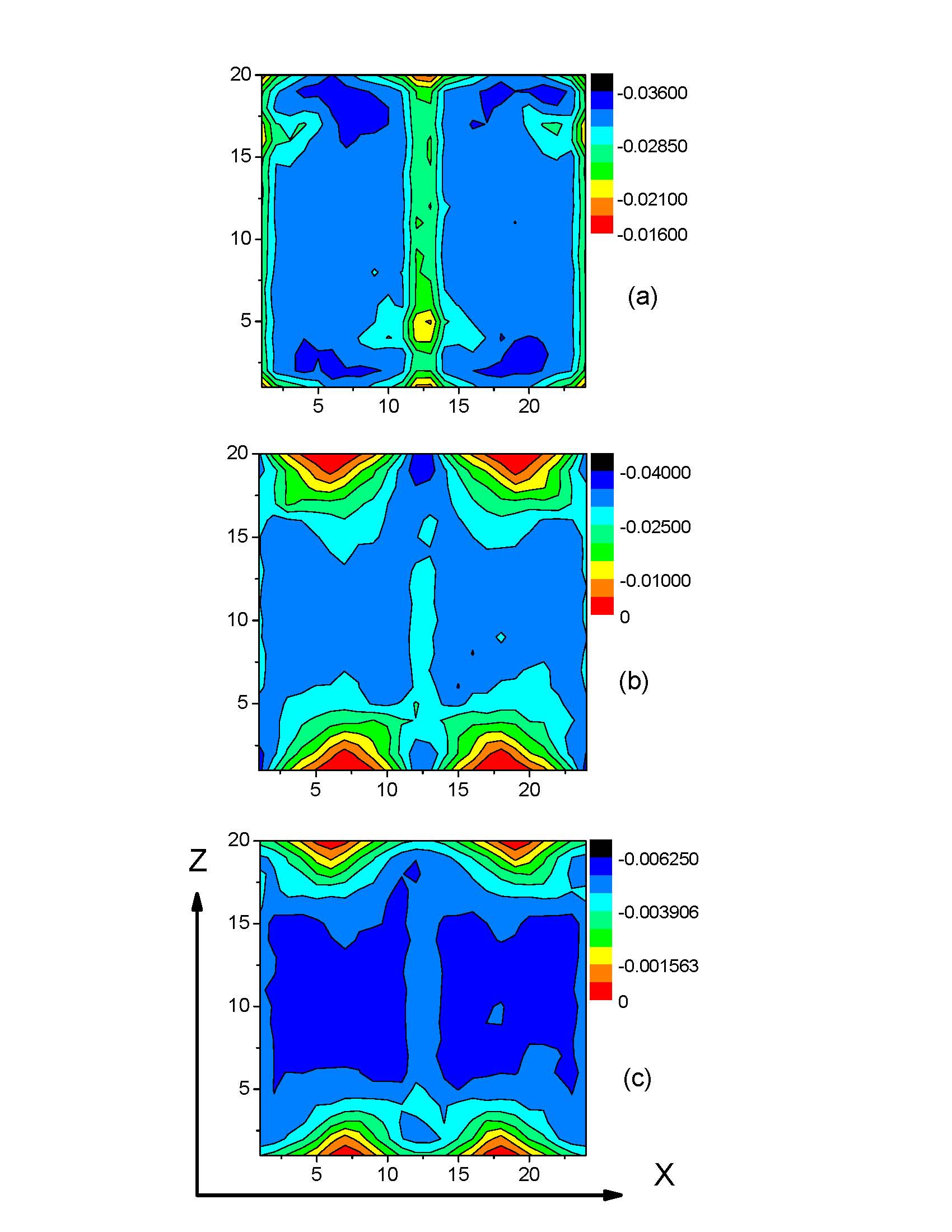
FAYETTEVILLE, Ark. – University of Arkansas researchers have developed a tool that helps them determine what factors drive the dependency between the periodic pattern width and thickness of an ultrathin film that exhibits both magnetic and ferroelectric properties. This will allow scientists to make better predictions and may be useful in improving the efficiency of some devices.
Sergey Prosandeev, S. Lisenkov and Laurent Bellaiche published their findings in Physical Review Letters.
“By using this formula and knowledge, we can predict the effects of changes in the ultrathin film system,” Prosandeev said.
Scientists have examined the properties of an ultrathin film of bismuth ferrite, a material that can change polarization when under a magnetic field or magnetization when under an electric field. Because of these properties, bismuth ferrite interests researchers who want to design novel devices. The scientists studied how the width of the ferroelectric domains — the areas in the material that are polarized in the same direction — depends upon the film’s thickness. In thin films, these domains look like stripes, with one domain next to another with polarization in opposite directions. The surface of the film has energy bumps that correspond with the domains. Many magnetic materials have domains, as do some ferroelectic materials. But until now, little was known about the size dependency of the domain’s width in bismuth ferrite films because of the material’s complex nature.
To determine the material’s properties, the researchers used the Star of Arkansas, a supercomputer operated by the University of Arkansas. They looked at magnetism, ferroelectricity, and what is known as oxygen octahedral “tilting,” where the different atoms are twisted at a particular angle from one another, and tried to determine which of these properties might contribute to the behavior of the domains in the ultrathin film.
“The domain’s nature is very complex,” Prosandeev said. “In order to understand this, we must separate things, and then put them back together.” So he and his colleagues invented a new tool that allows them to separately visualize the energy density of each thing that contributes to the total energy.
By doing so, they discovered that the tilting mechanism strongly contributes to the thickness dependency of the domain width. They also determined that electrostatic forces and the relationship between the material’s magnetic and electrical properties are responsible for some “bumps” in the energy surface. Knowing this may allow scientists to manipulate different properties of the material and to better predict what the results of such manipulation might be.
Contacts
Sergey Prosandeev, research professor, physics
J. William Fulbright College of Arts and Sciences
479-575-6668, sprossan@uark.edu
Melissa Blouin, director of science and research communication
University Relations
479-575-3033,
blouin@uark.edu